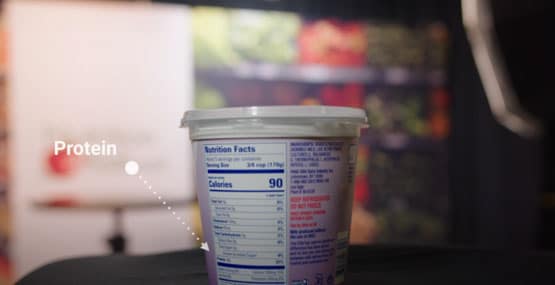
6 hacks for buying healthy breads, cereals, and pasta
Shopping for breads, cereals, and pasta can be a bit overwhelming. But armed with some knowledge about nutritious options, you can make smart choices that will keep you and your family fueled and feeling good. Our 5 tips will put you in the right direction and our Healthy Grains video in our Grocery Shopping series will show you even more.
- Whole grains for a health boost: When shopping for bread, cereals, and pasta, look for products made from whole grains. Whole grains retain all parts of the grain, making them richer in nutrients and fiber. Opt for whole grain breads, whole wheat cereals, and whole wheat pasta. These choices provide more vitamins, minerals, and fiber compared to refined grains, which have been stripped of some of their nutrients.
- Fiber matters: Fiber is an essential nutrient that helps regulate digestion, keeps you feeling full, and supports overall health. Look for breads, cereals, and pasta that are labeled as "high in fiber." These products contain more fiber, which aids in digestion and can help prevent constipation. Check the nutrition label for the amount of fiber per serving, and aim for products that have at least 3 grams of fiber per serving.
- Watch out for added sugars: When choosing breads, cereals, and pasta, be mindful of added sugars. Some products, especially cereals meant to please a kid's sweet tooth, may have added sugars to enhance flavor, but consuming too much added sugar can contribute to health problems like obesity and tooth decay. Read the ingredient list and choose products with little to no added sugars. Look for terms like "no added sugars," "unsweetened," or "sweetened with fruit" to make healthier choices.
- Going gluten-free: Some people can't tolerate gluten due to a condition called celiac disease or gluten sensitivity. Because gluten is a protein found in wheat, rye, barley and a few other grains, gluten-free breads are made with alternative flours like rice, corn, potato, or tapioca. To make the bread rise, other ingredients like xanthan gum or eggs are used. But these products are often more expensive and have no benefit for those who aren't gluten-sensitive or allergic to wheat. And be sure to read the labels carefully, as some gluten-free breads may still contain traces of gluten.
- Portion Control: While bread, cereal, and pasta can be part of a healthy diet, it's important to practice portion control. Pay attention to serving sizes mentioned on the package and measure your portions accordingly. It can be easy to consume more than the recommended serving, and eat a few more slices of bread, for example, leading to excess calorie intake. By sticking to the suggested portions, you can enjoy these foods while maintaining a balanced diet.
- Be a Savvy Shopper: When shopping, compare different brands and read food labels to make informed decisions. Look for products that have a short ingredient list with recognizable and wholesome ingredients. Avoid products with hydrogenated oils, high fructose corn syrup, and excess additives. Additionally, understand that products fortified with vitamins and minerals provide additional nutritional benefits, but cereals, white breads and pastries made from refined flour have first been stripped of their natural vitamins, minerals and fiber.
Conclusion: Shopping for healthy breads, cereals, and pasta doesn't have to be complicated. Opt for whole grain options, check for high fiber content, and be cautious of added sugars. Use gluten-free products, if you need them. Practice portion control and be a savvy shopper by reading labels. By making these choices, you can enjoy delicious and nutritious carbohydrates that will support your overall health and well-being. Our Healthy Grains video has more tips and information as well.





